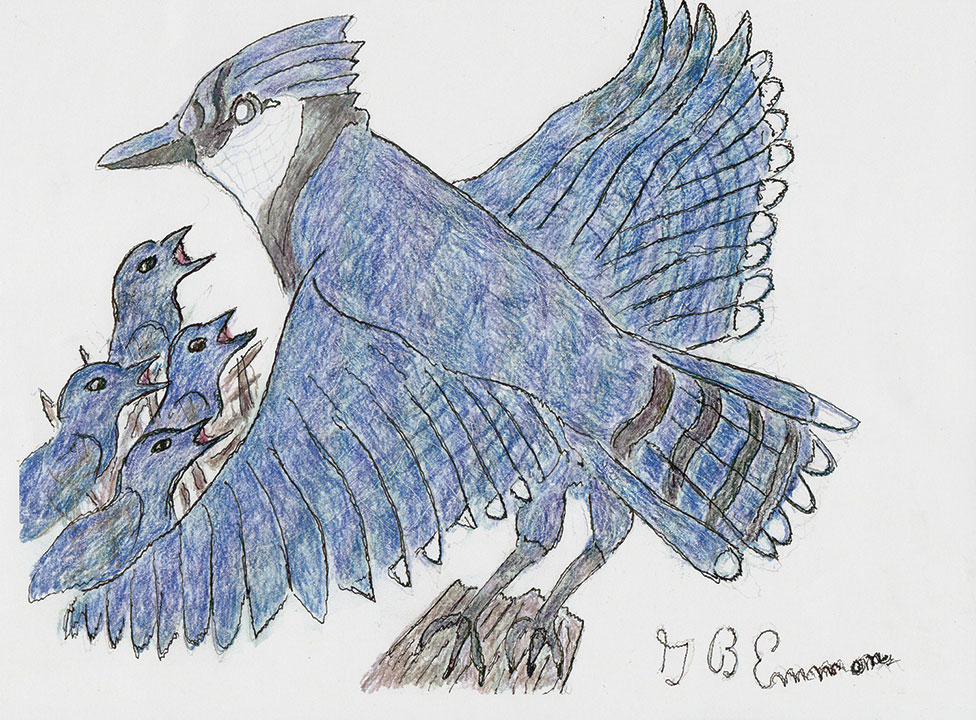Henry David Thoreau’s description of the loud, alarming call of the blue jay within hearing in our backyards is an accurate one; he likened the sound to an unreal, steel scream shattering the silence on an otherwise quiet day. It sounded to him like catching a thief in the act of committing a crime or an arsonist lighting a fire in a schoolhouse.
The blue jay’s vocal habit of warning other creatures that something in the forest is amiss is an inherited habit to perceived trouble afoot and makes them appear to be official caretakers of peaceful tranquility in the environment around them.
As in my illustration, blue jays teach their siblings at an early age that noisy demonstration by opening their hungry mouths wide and screaming their heads off is an attention getter and often is rewarded by being fed a juicy morsel by a responsive parent visiting the nest.
Adults find and store food for them such as acorns that they often hide to be available in hard times. They also bring to the nest seeds and soft fruit, and even small arthropods. Here, the blue birds benefit in foraging in sandy soil in nearby Cape Cod as well as coastal shores of Buzzards Bay and Cape Ann.
In appearance, the blue jay has a high profile of colorful plumage, including a signature crest like a crown of feathers on its head that may be lowered or raised depending on the individual’s comfortable mental mood or sense of alarm. When feeding or resting, the crest is flattened on the head. The black plumage on its throat varies extensively by individuals and is believed to assist in recognition by birdwatchers in their own backyards.
Blue jays take special care of their feathers when they start to molt in warmer weather, using a process called anting, or rubbing them with chemicals found on ants and other substances found on insects.
The blue jay’s scientific name is derived from Greek and Latin word Corvidae meaning “chattering bird” and includes ravens, rooks, jackdaws, crows, and magpies. All are of the order of Passeriformes or perching songbirds. These birds are of ancient lineage with fossil remains of corvids identified from Miocene deposits 25 million years ago. Today they are often labeled as bully birds of our backyards and were actually painted by James Audubon in a group habit of robbing nests of eggs and hatchlings, but this was entirely unfounded and unjustified.
The blue jay deserves a lot of credit to be smart enough to survive very well in areas with a wide range of human beings, as well as undergoing a climate transition of global warming and, subsequently, a greatly deteriorated environment. It has somehow survived on a high-profile pedestal among birdwatchers as a character personality of doubtful behavior, which nevertheless deserves to be written about and illustrated for your interest and appreciation.
By George B. Emmons
